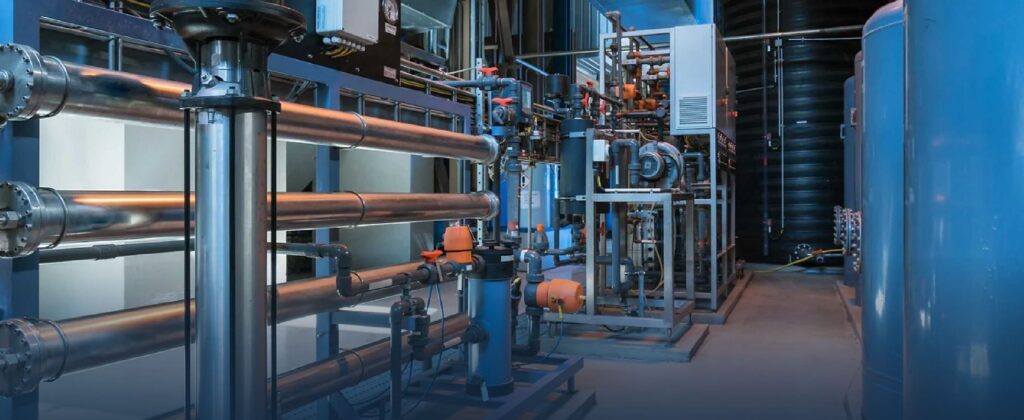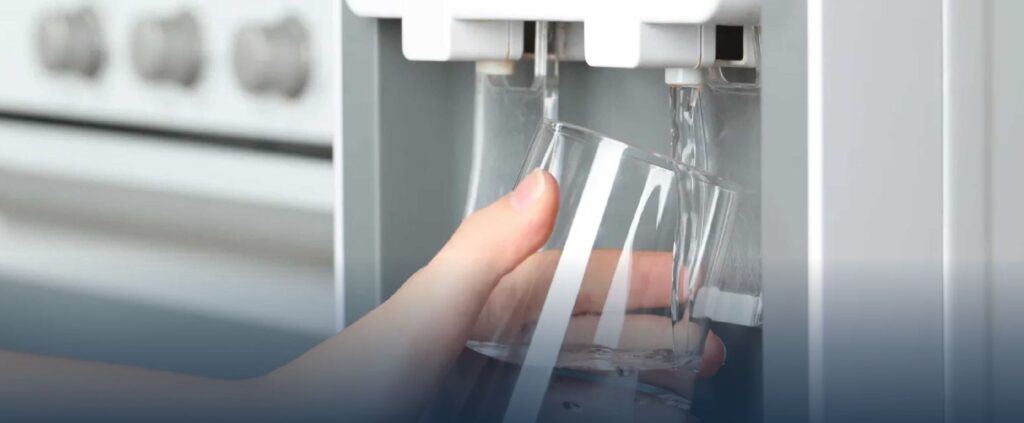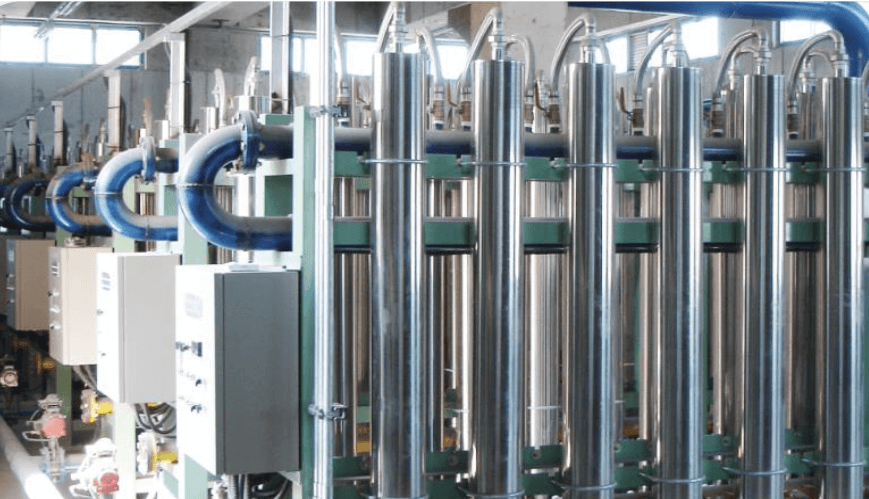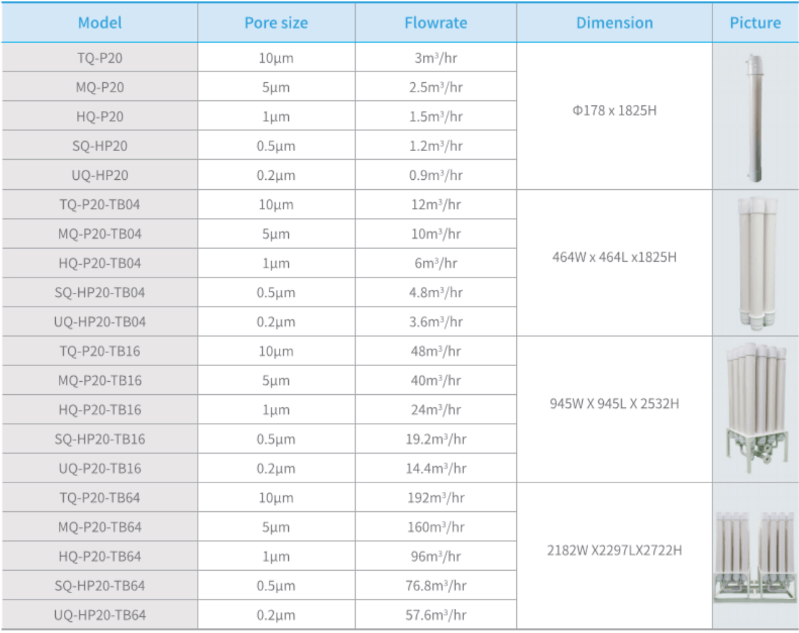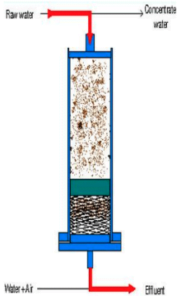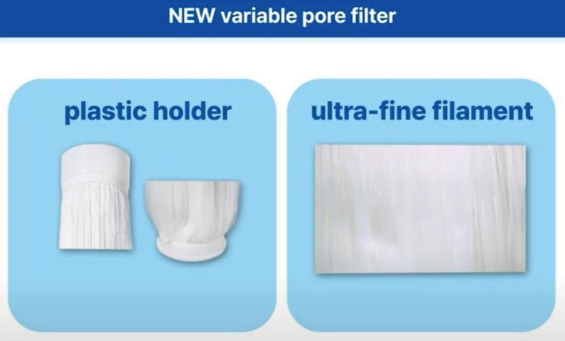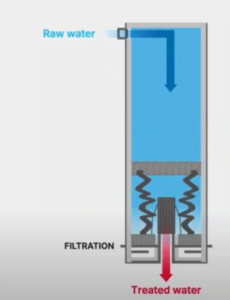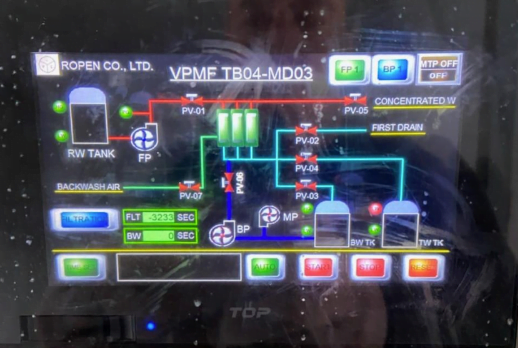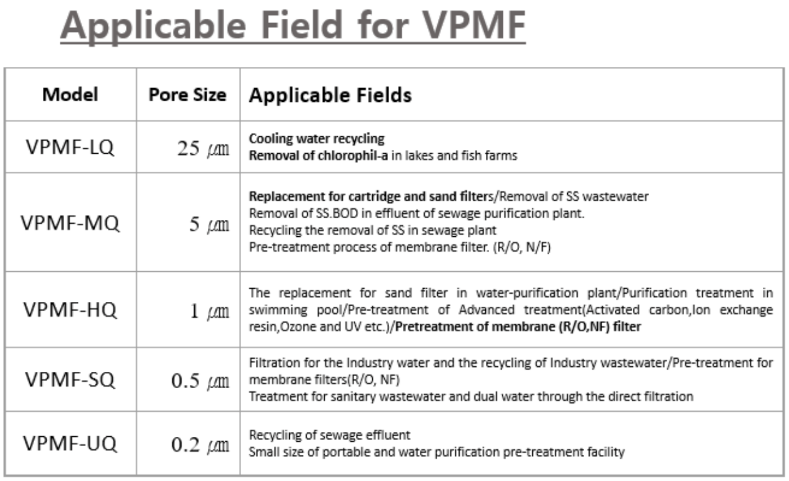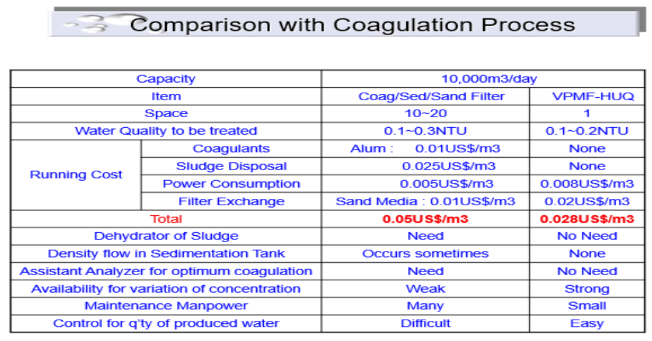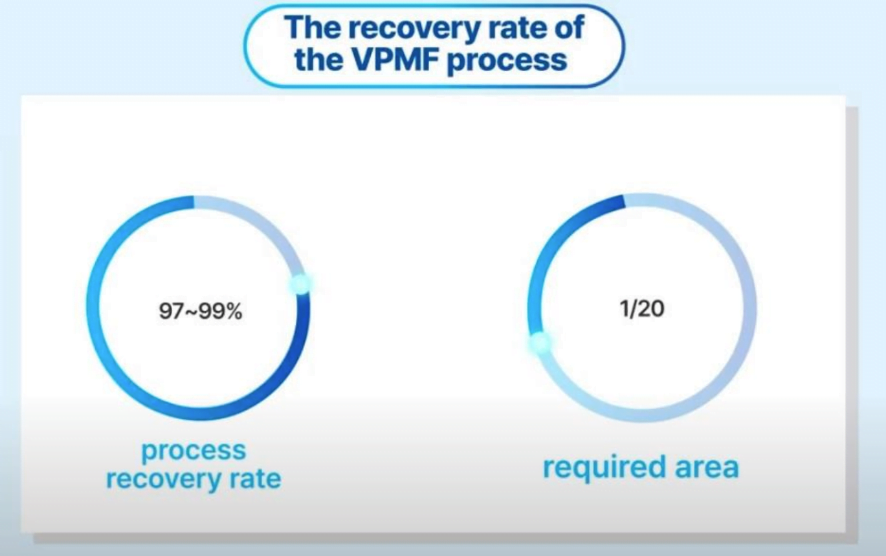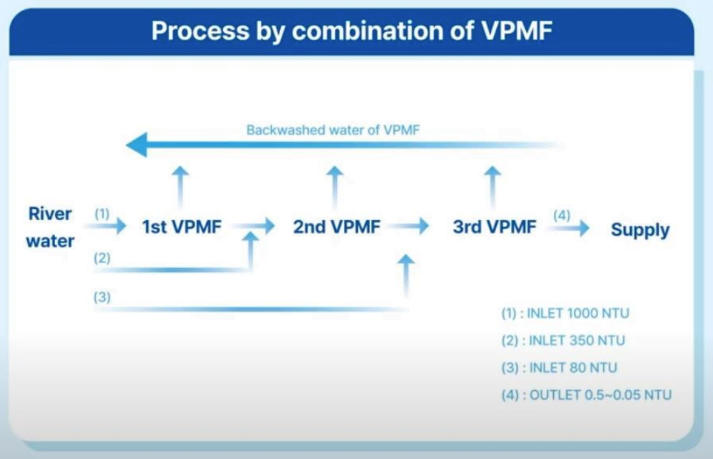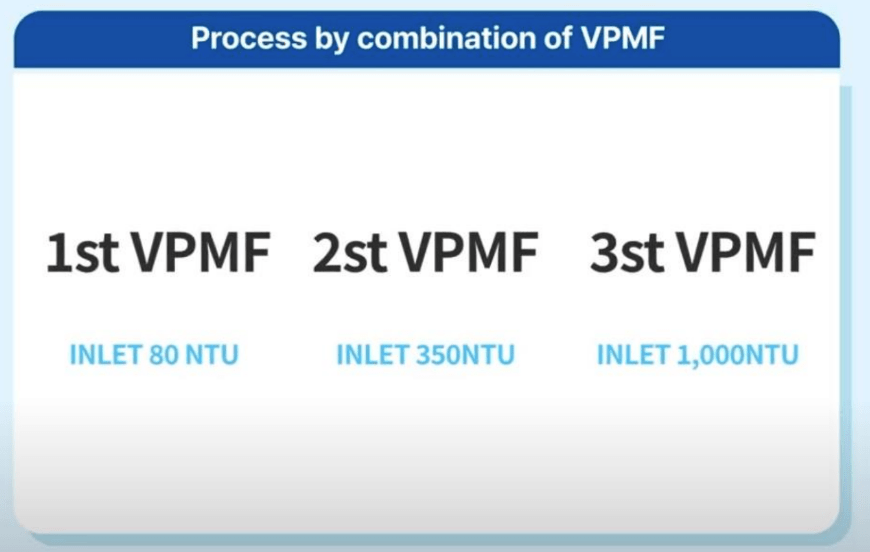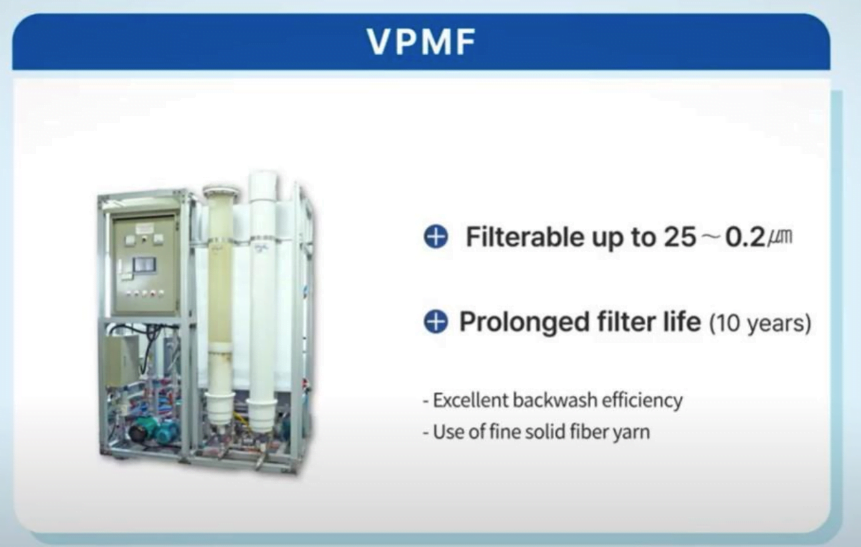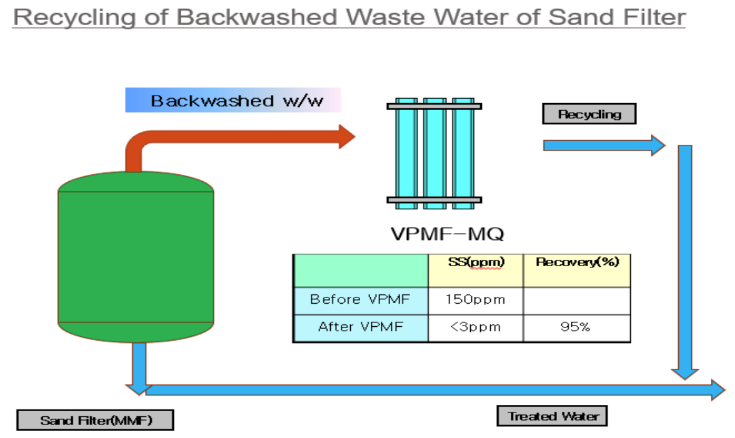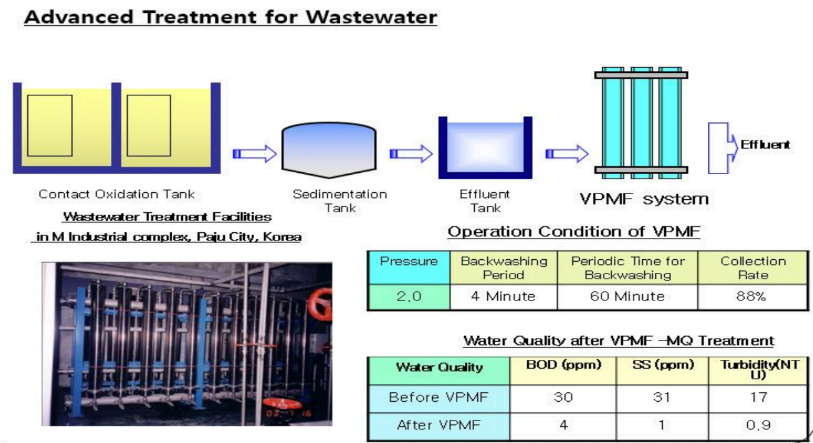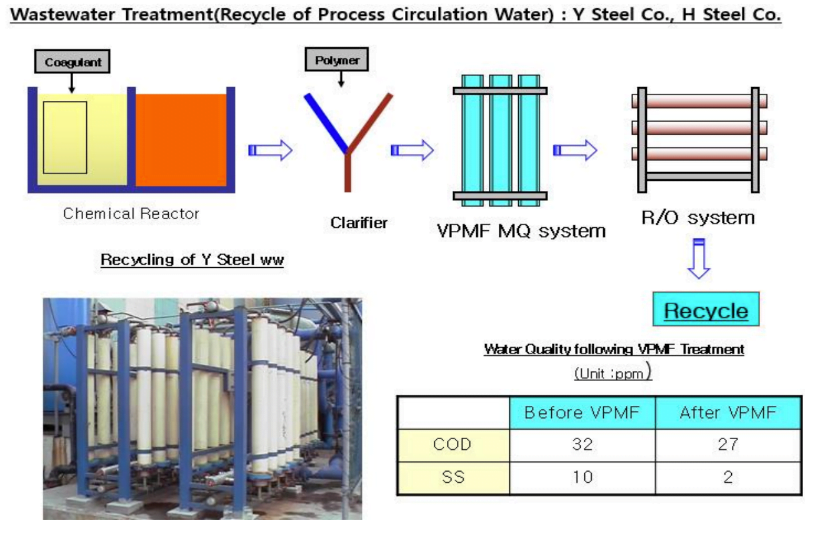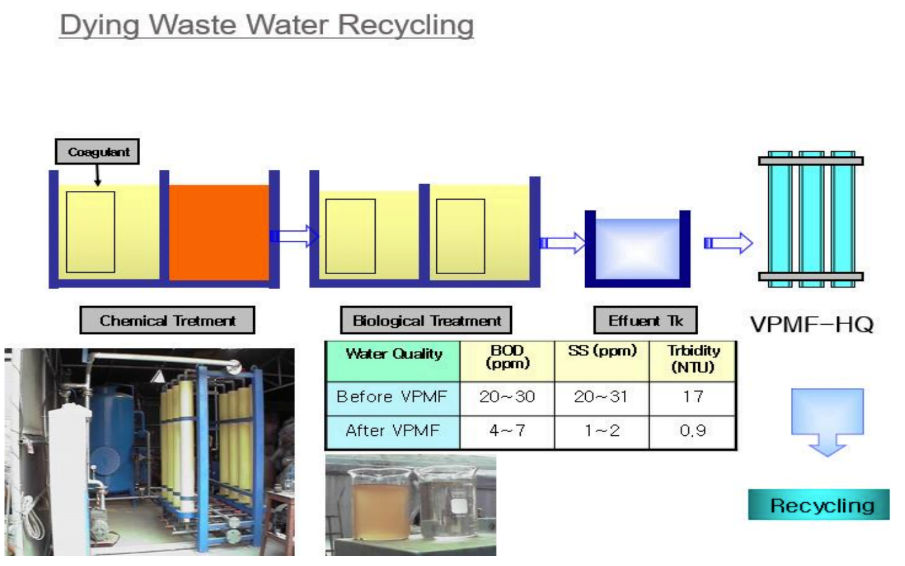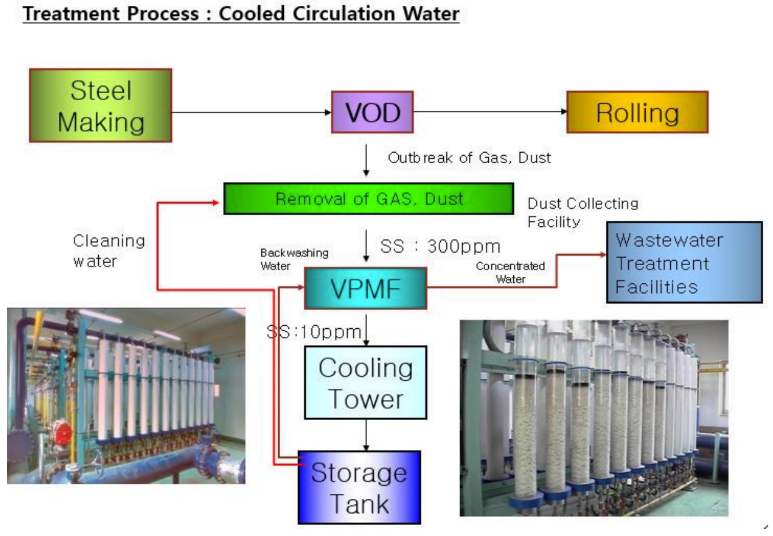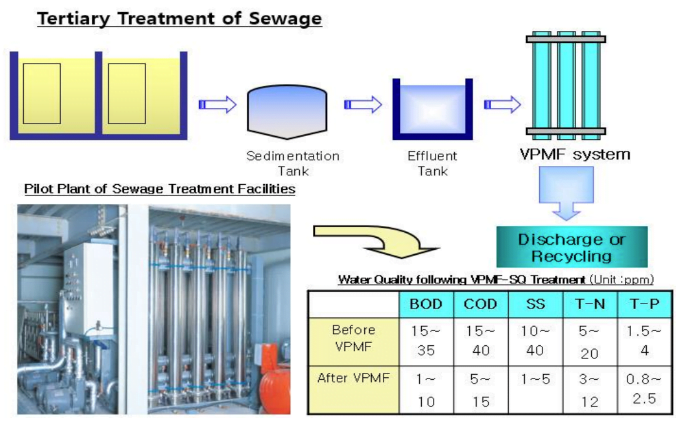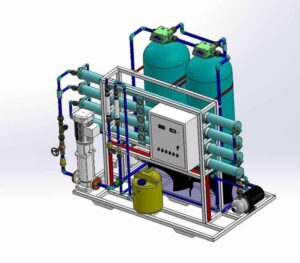~ INDUSTRIAL SOLUTIONS ~
VPMF Filtration
|
ABOUT VPMF TECHNOLOGYAdvantages of the VPMF Plant:VPMF technology provides a low energy filtration solution that delivers safer, lower cost operations with improved performance over more traditional approaches. Using filtration modules manufactured from polyester fibres, it either eliminates or complements membrane filtration and as a result, there is no risk of fouling, making for lower maintenance, more reliable operations. VPMF (Variable Pore Micro Filtration) allows for filtration of suspended particles to 0.2 microns. The polyester fibres are compressed during filtration and stretched during air assisted backwash, reducing the amount of water required and with it, producing significantly lower quantities of backwash wastewater. The system requires no coagulants, flocculants or CIP chemicals either, offering not just higher efficiency, but a more sustainable approach to filtration too. This flexible system can meet the needs of most installations, with filtration modules that can be configured from 10 micron down to 0.2 micron, depending in the application. That finest filtration capability offers better quality feedwater for Reverse Osmosis and Desalination Plants, with higher performance than alternatives. All this is achieved through a system that occupies just 5% of the footprint of a conventional treatment plant too, ensuring the highest level of performance even in space restricted applications. That smaller space, lack of chemicals and tailored filtration capability also mean budgetary savings too, with the VPMF system requiring significantly lower capital investment during setup, and much cheaper running costs while in operation too, thanks to the elimination of the chemicals required for maintenance in a traditional system. The VPMF technology is extremely flexible, and can be used with any water sources, including wastewater, dam water, creek water or seawater as required. By using VPMF technology, there is no need for clarifiers either, further reducing costs and eliminating a significant space requirement. One of the most promising applications for VPMF is for pre-treatment of membrane filtration such as desalination and ultrafiltration. This brings with it the added benefit of eliminating or reducing the need of CIP-chemicals for the flux recovery of membranes. That efficient operational also removes a wide range of suspended solids including colloidal material, algae and plankton, for long term, economical and sustainable performance. How the VPMF worksDuring filtration, water is fed from the top of the pressure vessel moving downwards through a matrix of polyester fibres that are attached to a plunger. The influent flows through gaps in the plunger through the matrix of polyester fibres – from outside towards an inner collection tube. This simulates a depth filter which follows the same principle.
The flow paths between the microfiber will eventually be restricted by trapped suspended solids. This will then require an air assisted backwash. During backwash, the flow is reversed and air and water travels from the bottom and exits the top of the pressure vessel. The flow of water and air will force the plunger up, thereby stretching the microfibers. This will allow the suspended solids to dislodge and be removed with the backwash waste in an upward direction. On completion of the backwash, the flow is reversed, thereby forcing the plunger back down. Please watch our explanatory video for more insights. Safety and OperationsThe VPMF Plant comes with a HMI that will provide a level of diagnostics capability to aid in any troubleshooting, ensuring long term performance and reliable operations. The HMI also shows system status such as whether the unit is in filtration or backwash mode, as well as open/closed status of the pneumatic valves. Systems settings are optimised during commissioning to suit water quality parameters and site conditions to maintain the efficient and effective performance throughout the lifecycle of the system. The VPMF plant has been designed to operate without operator intervention, with the different cycles being initiated automatically. This ensures constant performance while reducing overheads, for cost effective and efficient filtration at all times. The surfactant dosing system (if required) will start and stop automatically based on flow paced control, making the entire system fully autonomous. Offering exceptional performance, significant costs savings, reduced footprint and impressive sustainability improvements, VPMF filtration technology represents a revolution in the industry. Talk to us today to see how VPMF technology can work for you. About VPMF TechnologyAdvantages of the VPMF Plant: Types of filtration modules available are listed below:
How the VPMF works:During filtration, the water is fed from the top of the pressure vessel moving downwards through a matrix of polyester fibres that are covered with a plunger. The influent flows through gaps in the plunger through the matrix of polyester fibres – from outside towards an inner collection tube. This simulates a depth filter which follows the same principle. The flow paths between the microfiber will eventually be restricted by trapped suspended solids. This will then require an air assisted backwash. During backwash, the flow is reversed and air and water travels from the bottom and exits the top of the pressure vessel. The flow of water and air will force the plunger up, thereby stretching the microfibers. This will allow the suspended solids to dislodge and be removed with the backwash waste in an upward direction. On completion of the backwash, the flow is reversed, thereby forcing the plunger back down, compressing the fibres.
Flow Path during Filtration:
Flow Path during Backwash:
Control & Alarms:The VPMF Plant comes with a HMI that will provide a level of diagnostics capability to aid in any troubleshooting. The HMI also shows system status such as whether the unit is in filtration or backwash mode, as well as open/closed status of the pneumatic valves. Systems settings are optimised during commissioning to suit water quality parameters and site conditions. The VPMF plant has been designed to operate without operator intervention, with the different cycles being initiated automatically. The surfactant dosing system( if required) will start and stop automatically based on flow paced control.
Applications for VPMF (Micro Filtration)
VPMF Cost Comparison with Conventional Processes:
VPMF Recovery Rate and foot print area:
VPMF Multiple Stages for higher turbidity feedwater
Examples:
|


